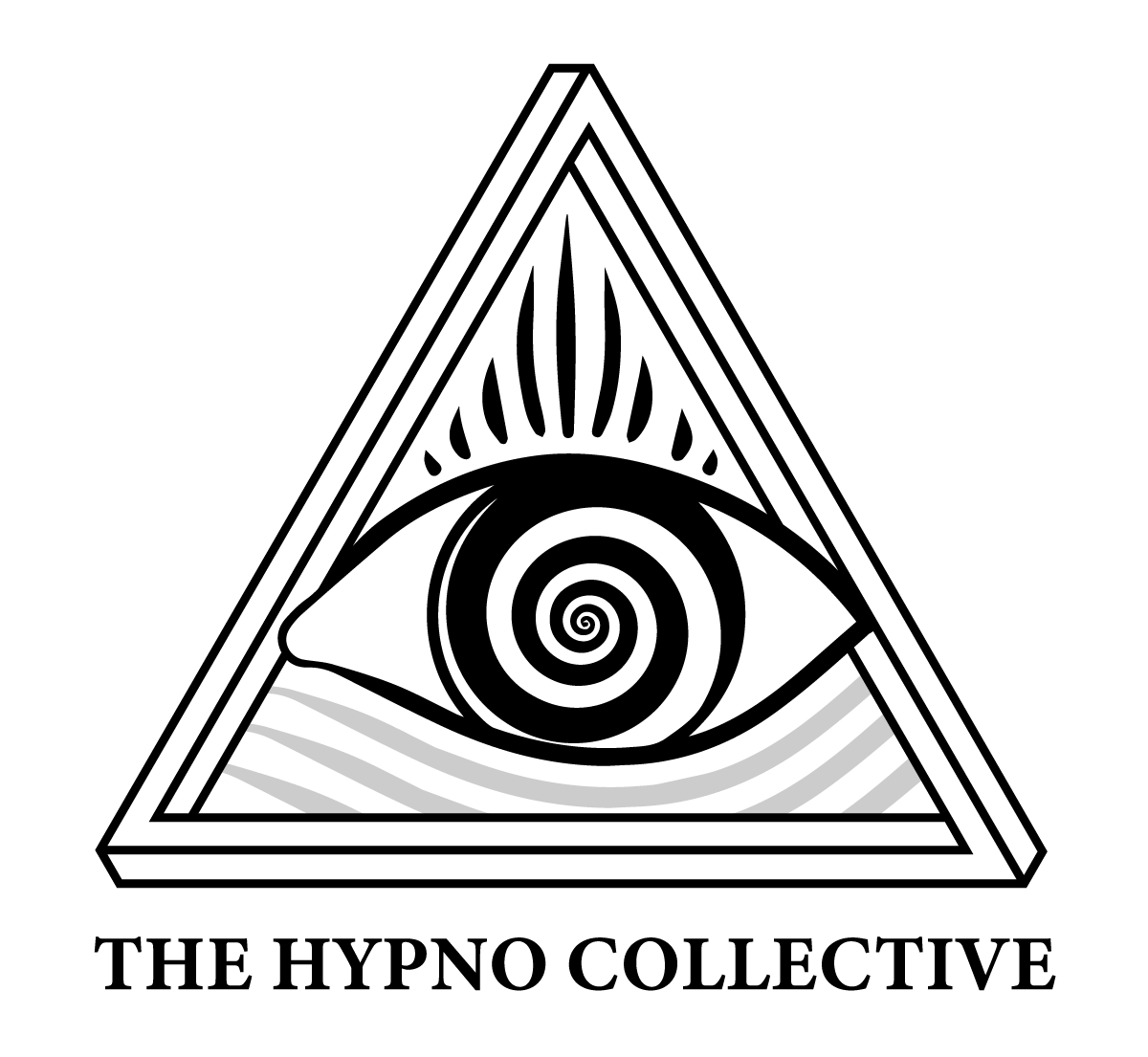
Article by Mutt
Reposted content with full permission from Mutt.
Photo by Mitchell Luo / Unsplash
More-so than other kinks, the kinky hypnosis community stands independent of the general BDSM community.
There are historical reasons for this: For years, hypnosis was banned from websites like FetLife due to Visa and Mastercard’s adversarial approach to hypnosis content (and it remains a blocked search term). Due to misconceptions, many BDSM spaces treated hypnosis as “inherently non-consensual” and thus, forbidden. Until the advent of resources like Mindplay and LearnHypnoKink.com, the main way to learn hypnosis was from hypnotherapists and stage hypnotists, not from kinksters in BDSM spaces. There are also a few reasons for our independence that persist even with the growing acceptance of hypnosis by the BDSM community: play parties tend to be loud and focused on high-energy play like impact, whereas hypnosis kinksters prefer a more quiet relaxing environment where you can easily hear each other. Most of BDSM is very physical, and playing with the wrong rope-top or impact-top can seriously injure or even kill you. Hypnosis is entirely mental, and the subject is a collaborative participant. This creates a bit of a cultural difference in approaches to things like vetting and safety.
I love the hypnosis kink community, and don’t mind that we are an overlapping but distinct community from BDSM rather than contained entirely within it, however as a consequence of our independence, there are many fundamental BDSM skills and cultural concepts that can be easy to miss when learning to be a hypnotist or subject. A class on kinky hypnosis will generally focus on how to do the hypnosis skills, and a hypnotist aspirant will generally see becoming adept at hypnosis as their primary focus.
But hypnosis, like all BDSM, is fundamentally about connection and having a shared experience. Your kinky hypnosis scenes will be improved more by good BDSM fundamentals than advanced hypnosis techniques. You can learn all of this by attending a BDSM 101 class at your local dungeon, but too often those classes are not taught at a high enough frequency to meet the needs of the community, as instructors may find them boring or tedious to teach, and there might not always be a large crowd who attends. Furthermore, due to the remote-capable nature of hypnosis, many hypnokinksters do not have a local dungeon or kink community to turn to.
In this article I will attempt to briefly provide the fundamentals of BDSM, targeted at people in the kinky hypnosis community.
“Play” and “Scene?”
The words “play” and “scene” are so fundamental to the framework of kink that kinksters forget they don’t have intrinsic meaning to newcomers and fail to define them in the way that we use them.
Why is it “Play?”
The word “play” is two-fold in meaning. For one, when we engage in kinky activities together, we are playing. Remember play? From when you were so small? You would play make-believe with your friends, or play games with silly rules. Maybe your play looked like lining up objects according to a system of organization. The purpose of play is to have fun together, and to be playful.
Have you ever seen some puppies jumping on each other and rough-housing? But it’s okay, someone said to you once, when you were young: They’re just playing.
Most of the things we do in kink are unethical and dangerous to do to someone for real. We play with unethical power dynamics, and even commit assault, by the definition of some legal codes. It’s okay that we do these things, because we’re just playing. We’re rough-housing like puppies. It’s playful. We’re being careful not to cause real lasting harm. What we are doing is fundamentally the same as playing football or tug-of-war. With hypnosis kink, what we are doing is not fundamentally that different from Dungeons and Dragons.
Johan Huizinga coined the term “The Magic Circle” to describe the ways that play is set apart from the real world by a sort of playground. When we enter the Magic Circle, the social rules change. To quote Nyx Goddess Games: When you’re not playing soccer, it’s okay to use your hands, but not okay to chase people. When you’re playing soccer, it’s not okay to use your hands, but it is okay to chase people.
All kink, including hypnosis kink, exists inside this magic circle. In our magic circle, it’s okay to manipulate someone’s emotions and play mind games on them. In our magic circle, it’s okay to call someone a dumb slutty bimbo. These things are okay because we negotiated and agreed upon the rules of the game before we started.
The secondary meaning of play is theatrical. At the end of the day, kinksters are mostly horny theater kids. Many kinks overlap with circus tricks, stage magic, and improv comedy techniques. Playing improv theater games will make you better at BDSM. Hypnosis kink and LARPing share a lot of the same skills. “LARPing” is often a derogatory term on the internet, something ascribed to fake leftists and internet weirdos, but if you’ve ever been to a LARP, you’ll realize it’s a big elaborate improvised theater performance that everyone is playing together. It’s playing make-believe, like when we were kids. You enter a magic circle and now you are a fairy. The more immersed you become in the game, the more fun it is. You will realize that half the people at the LARP are people you met at the erotic hypnosis convention a few weeks ago.
When we do kink, we’re just playing. This is a fundamental difference between hypnotherapy and hypnokink. It doesn’t matter if it’s “real” or if it achieves a clinically significant outcome. What matters is that we’re having fun and getting what we want out of it.
Why is it a “Scene?”
Remember, kinksters are fundamentally horny theater kids. The word scene also comes from the world of theater. This is our instance of playing together. We drew the magic circle around this moment, and in this moment, the rules are different. The scene is generally time-bound.
The structure of a scene should be:
- Negotiating what the scene will be (discussing the rules of our game)
- Explicit consent to play the scene we just negotiated, and affirming that we are ready to start.
- We now enter the magic circle and play our roles in the scene and do all the kinky things we discussed. We are now on stage, performing, improvising, and having fun.
- At the end, we leave the scene, we leave the magic circle, and return to the real world. To work towards feeling normal, we participate in aftercare.
NCPA. Negotiations, Consent, Play, Aftercare. If you want a mnemonic: “Nana can’t play Arkanoid.” Need to remember the structure of a scene? Imagine your grandmother being totally incompetent at playing Arkanoid. Is this helpful?
Sometimes, people build up an ongoing dynamic, playing together multiple times, and building on each successive scene. You might think of this as being one long play, or a movie, and the scenes are the individual scenes from that bigger story.
More-so than other kinks, hypnokinksters tend to blur the lines between scene-time and real-time. Hypnosis allows you to modify someone’s general behavior, or condition them to respond to certain stimuli. Many fantasize about being compelled to obey a partner at any time. These sorts of dynamics are outside the scope of this article, but the magic circle remains a useful tool for looking at these dynamics.
Even if the play is not time-bound by scenes they’re still just playing, and they exist within the rules of the magic circle. Remember The Game? The one that you just lost, because I made you think about it? That is an example of an ongoing game that we all used to play together all the time. Other examples might be road trip games like Piccadilly and Punchbuggy. Whenever you see a car with only one headlight, you race to touch the ceiling of the car first and say “Piccadilly!” These are games that we are “always playing” but they still have rules.
Even in an ongoing dynamic, it is still just a play, and still play. You’ve created a game that you’re always playing together, but you must still recognize it as just playing together, just a silly game, it’s not real. You must be able to step outside of the magic circle and discuss what you are doing from a grounded place and ensure you’re both having fun.
Consent
Much has been written about consent already. I absolutely adore GleefulAbandon and Sleepingirl’s section on consent and negotiations in LearnHypnoKink. Many people at this point, fortunately, see the need for consent as obvious, which I can’t say was true fifteen years ago.
However, too many see consent as merely being a box to check-off so they can do the things they want to do without repercussions. A matter of liability, rather than a fundamental building block of having a good scene together.
As Sleepingirl and GleefulAbandon write in LearnHypnoKink: Consent is not just ethically necessary, it is also necessary to achieve true intimacy. A good scene is a shared experience and if it’s not consensual, then you are having two extremely disjointed experiences. One of you may be having the best time of your life, while the other experiences the most traumatic moment of their life.
Fundamentally, we should be approaching our kink from a place of caring about our play partners and wanting to enjoy something together. Good consent practice is ultimately about caring about what your play partner wants, caring about the well-being of your play partners, and building something together that you both want.
If someone comes and talks to you about a consent injury, instead of trying to litigate if you did a sufficiently adequate job obtaining consent so as to not be punished, focus your attention on the fact that someone you care about says they feel hurt, and what care you can provide to help them feel safe and heal from the experience. Be present and future oriented. What could we do better in the future?
The FRIES Model of Consent
FRIES stands for:
- Freely given
- Reversible
- Informed
- Enthusiastic
- Specific
Freely given means that consent was not obtained via coercion. The consenting party could say no without facing repercussions. In a kink setting, this often means we need to be careful with existing social power dynamics, and ensure nobody feels like consenting to a scene with someone is necessary for full inclusion in the community. Other things to consider are if someone can freely and safely leave the room or take space from someone after saying no, and if they feel safe saying no in general. In a kink setting, this also means we should be negotiating from a place of being equals, and holding off on any dominant undertones or hypnotic language until after the scene begins.
Reversible means consent can be revoked at any time. Consent to trance me now does not mean consent to trance me any time again in the future. Even when we negotiate “standing consent” where someone states you do not need to ask every time to do something, that standing arrangement can always be revoked.
Informed means you have to know what you are consenting to. In a kinky hypnosis setting, this means that your hypnotic subject must know what suggestions you intend to give before they can consent to receiving them. It also means being informed of any risks. A newbie to rope bondage cannot truly consent to being tied up if nobody has ever informed them of the risk of nerve damage. Some consensual non-consent dynamics might allow for “surprises” but that is outside the scope of this article.
Enthusiastic is a sometimes debated one, but essentially, “YES” means “YES!” and “maybe…” does not mean yes. If you’re hearing “sure….” in an unsteady tone, maybe double-check if your play partner is really up to kinking right now. Be aware of the potential for receiving a “Soft No” from people you are propositioning for play. A “soft no” often sounds like “Maybe” followed by absolutely no effort from the other person towards actually finding time to make the scene happen. Instead over-thinking if something is a soft no, or continuously chasing people who don’t seem to be enthusiastically interested in you the way you are in them, focus on the people who are excited to get to know you and play with you. Party with the kids who want to party with you.
Specific means nothing should be left implied. Consent to kink is not necessarily







